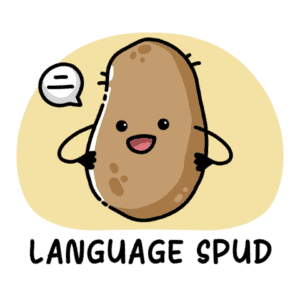Welcome to my absolute super-mega-behemoth collection of Mandarin learning resources.
On this page you’ll find all of the learning materials you’ll ever need to reach an advanced level of Mandarin and beyond.
This is a lengthy read, so make use of the hyperlinks if you’re looking for something specific.
Free Apps | Comprehensive Textbooks | Learning Characters | SRS (Spaced Repetition Software) | Writing Characters | Sentence Mining | Speaking | Reading | Listening | Chinese Media | Blogs | The HSK | Learning Chinese in China | Final Tips and Pointers
Free Apps
Free apps are the best place to start. If you download one of them, use it for a few weeks, and then decide learning Chinese isn’t for you (like 95% of learners), the only thing you’ve lost is a few minutes of your own time.

Chinese Skill
Following common topics, you’ll learn a new grammar point and a few words of vocabulary each lesson, which will take you 5-10 minutes each to complete. ChineseSkill covers the most content out of these apps.

Hello Chinese
HelloChinese is similar to ChineseSkill in many ways in that it’s a good introduction to basic Chinese. It has an almost identical layout as well, but ChineseSkill has much more learning content.

Duolingo
The European language courses are much better on Duolingo. The Chinese course is lacking in a few areas, namely audio and structure. Still, you could do much worse with a free app.
Comprehensive Textbooks
Some people give textbooks a hard time these days, often saying they’re an absolute snooze-fest.
I mean, why use textbooks when you have all of these cool, hip, and modern fancy apps, videos, and hypnotherapy courses?
Well, because textbooks are still very useful.
If we acquire language through listening, reading, and new words in context, then textbooks have all you need to form a very strong foundation for your studies. The progression structure in textbooks is very logical (not always, there are some shockers out there), and I still use textbooks as an advanced learner.

Boya Series
The Boya textbooks are the best I’ve comes across and I still use them today. They are the core textbook used on a lot of university Mandarin courses in mainland China. The Boya textbooks were used in my classes at Omeida Chinese Language Academy, a private language school in Yangshuo where I studied Mandarin Chinese for 6 months.
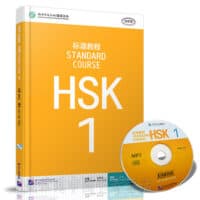
HSK Series
If you need to take and pass the HSK exam quickly, then your best option is to go with the HSK textbooks. There are some fairly big changes coming to the HSK exams, but that’s not for a few years yet (2023 apparently). There’s plenty of test practice and exam-style audio that come with the HSK textbooks.
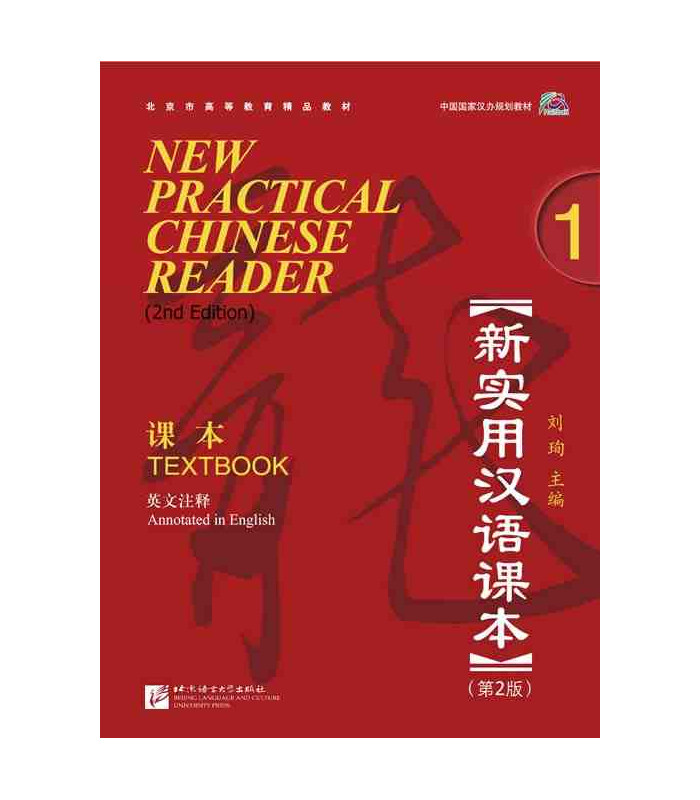
New Practical Chinese Reader
This series of textbooks is probably the most popular and easy to use for beginners. The learning content is rather interesting as far as textbooks go. This series doesn’t really have much for advanced learners, and a lot of learners who make it that far usually make a switch to other series.
HONOURABLE MENTIONS: Developing Chinese and Integrated Chinese are two other textbooks that are often ranted and raved about on Amazon, but I am yet to try them. If you’re going to get yourself a textbook, then do your due diligence and check them out, too.
Mandarin Chinese Dictionaries
A good quality Mandarin Chinese dictionary is essential for any Mandarin learner. Recommendations for good-quality paper dictionaries can be found below. However, we don’t live in the old days anymore, so it’s recommended you get one of the many good quality dictionary apps downloaded onto your phone.
The best Mandarin dictionary app ever is…
Pleco
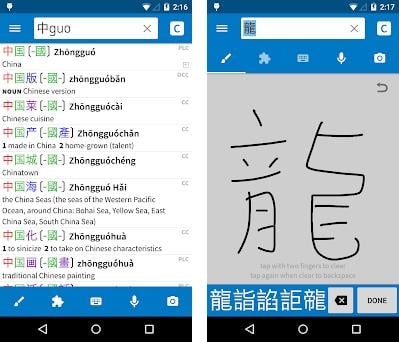
Every Chinese learner should have easy access to a comprehensive dictionary, and Pleco is just that – and so much much more.
If I were to start all over again and only had about $50 to spend on learning Mandarin, I would choose a good textbook, download the Pleco App, and purchase the Basic Bundle.
I and every foreigner I know in China use Pleco. The dictionary is free, but the basic bundle ($29.99) and professional bundle ($59.99) have some incredibly useful add-ons.
The Basic Bundle includes OCR, enhanced handwriting, flashcards, stroke order diagrams, text file reader, and more. The flashcard function is great if you don’t want a different flashcard app cluttering up your phone space, and you can use Pleco as a handwriting app as well.
One of my favourite things to do with Pleco is copy and paste (or write out) Chinese text from online articles, forums, comments, or my textbook, and read it in the text reader, highlighting words I don’t know to get instant translations.
PRICE
– Free dictionary
– Basic Bundle ($29.99)
– Professional Bundle ($59.99
Dictionary Apps
- Line Dictionary
- Train Chinese
- Hanping Chinese Dictionary (Google only)
SRS (Spaced Repetition Software)
Basically, spaced repetition is learning new stuff with flashcards. Newly introduced and more difficult flashcards are shown more frequently (in our case, new and difficult Chinese characters) while older and less difficult flashcards are shown less often in order to exploit the psychological spacing effect. The use of spaced repetition has been proven to increase the rate of learning new vocab.
Used in conjunction with other study methods (important), SRS apps and tools can help learn new language very effectively.

Hack Chinese
Hack Chinese is very new to the game, but it’s my main SRS (Spaced Repetition System) tool for learning new characters. It’s clean, simple, and very effective. It’s not an app (yet). It’s not free, but the curated, dynamic vocabulary lists mean you don’t have to tinker around with other word lists to get your perfect study program.
PRICE
– One week free trial.
– $12 per month (monthly subscription), $9 per month, (1 year), or $7 per month (two years).

Anki
Anki is probably the most popular flashcard app out there. The thing that sets Anki apart is that its flashcards are super customisable. There are so many functions available on Anki decks that it takes some getting used to. There are loads of pre-made decks, too. If you like flashcards, Anki is the app for you.
PRICE
– Free!*
– *Annoyingly for iPhone users, a one-off payment of $24.99 for the app is required. The desktop version and android app are totally free.
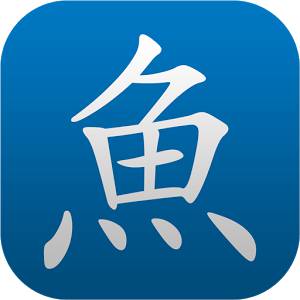
Pleco
Remember how I said Pleco was insanely versatile? I wasn’t kidding. The flashcard function inside the app (this comes with the Basic Bundle) is awesome. Use it. There are loads of pre-made decks available and it’s easy to import/create decks yourself.
PRICE
– Free dictionary
– Basic Bundle ($29.99)
– Professional Bundle ($59.99
Writing Characters
Learning to write characters by hand is a contentious topic amongst foreign students of Mandarin Chinese. The reason?
Writing characters is by far the most time-intensive aspect of learning Mandarin Chinese, and according to most learners, the least useful aspect of learning the language.
A lot of language students
Although I tend to agree with this sentiment, that doesn’t mean you should. Learning to write characters by hand most definitely has its uses.
- Memory – If you learn how to write a character by hand, you aren’t ever going to forget it.
- Details – some characters look very similar. If you know how to write them as well as read them, you’re much less likely to get confused.
- Chinese Universities – If you want to study a Chinese language course at a Chinese university, you’ll be required to write by hand during endless dictation sessions.
- Therapeutic – A few folks have told me that writing/calligraphy is like meditation and is a great way to relax. I prefer news blooper compilation videos and copious amounts of marijuana, but each their own.
Now, call me an old fart, but if I am going to practice my handwriting, I prefer to use my actual hand, a pen, and a piece of paper. Cheap notepads for writing Chinese can be found on Amazon for just a few dollars. Check them out here.
Handwriting Textbooks
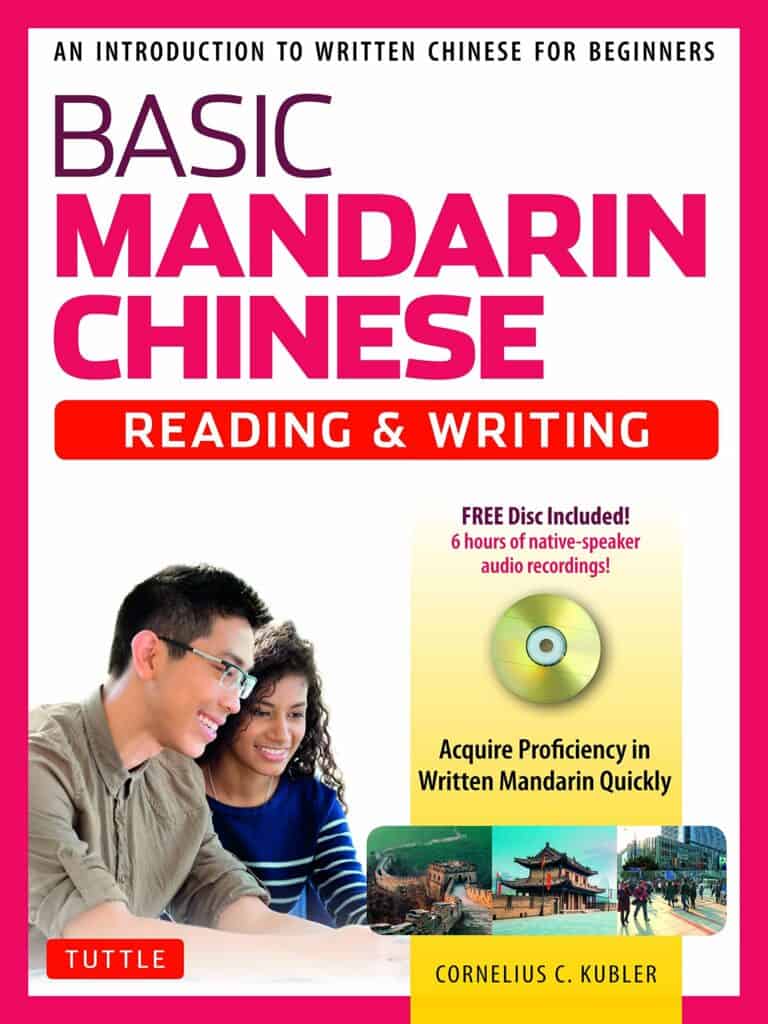
Basic Mandarin Chinese – Reading & Writing
Not only does Cornelius C. Kubler have a great name, but he also creates great textbooks. This book is a solid choice for beginners – a workbook for the 288 highest-frequency characters and 700 words in Chinese. Designed to have you reading and writing simple, connected Chinese sentences quickly.
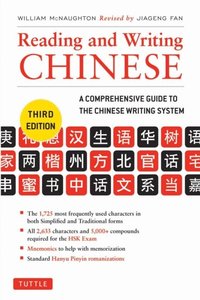
Reading and Writing Chinese: Third Edition, HSK All Levels
If you’re looking for a comprehensive writing textbook, this one should fit the bill. This book could potentially lead you throughout your entire character writing journey as it covers all HSK levels from total beginner to advanced.
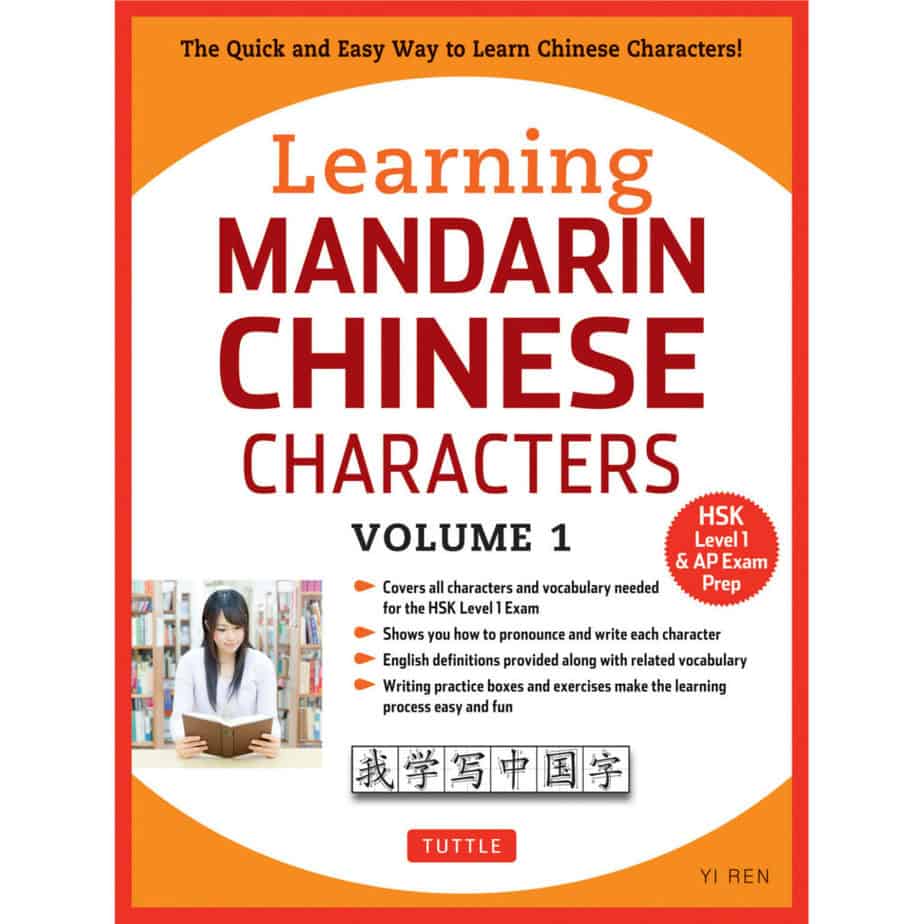
Learning Mandarin Chinese Characters Volume 1: The Quick and Easy Way to Learn Chinese Characters!
If you’re intimidated by the gigantic atlas of Chinese that is my previous suggestion, this one might be more up your street. It will cover all of the bases of HSK 1 and give you plenty of space to practice.
Skritter
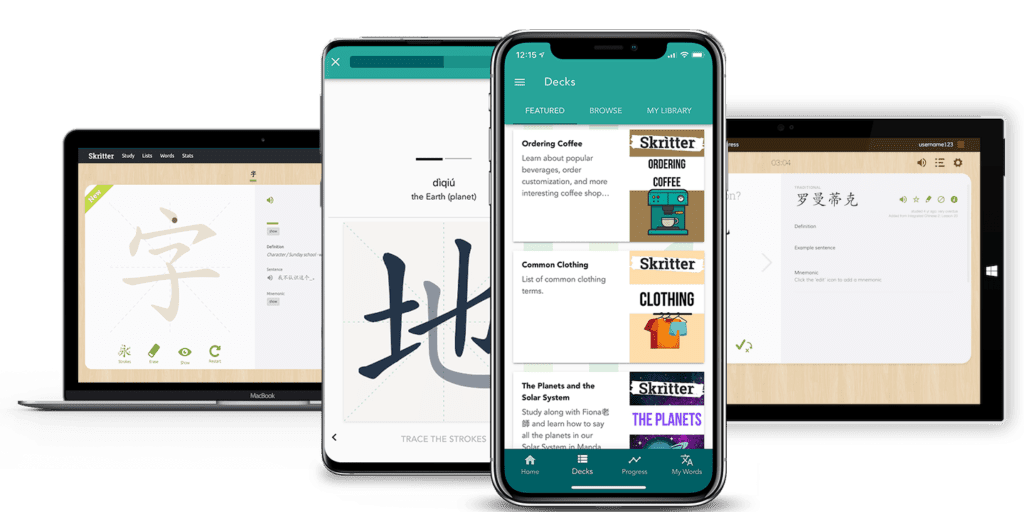
If you’re unable to peel your eyes away from your phone but you still need to write Chinese characters, Skritter is the app for you.
Skritter is basically a flashcard app with spaced repetition, except you’re writing the character by hand instead of just remembering what it looks like.
With Skritter, there are quite a few ways in which you can have your wordlist presented to you. You will have access to user-made wordlists, as well as the wordlists of all major textbooks. Skritter makes it easy for you to create your own wordlist, too.
For a more in-depth review of Skritter, check out this post.
PRICE
– 7-day free trial
– $14.99 per month (monthly subscription)
– Longer-term subscription plans are 6 months for $59.99 ($9.99/mo), 12 months for $99.99 ($8.33/mo), and 24 months for $179.99 ($7.50/mo).
If you’re looking for a more in-depth guide to Chinese calligraphy, I have written a post called A Beginner’s Guide to Chinese Calligraphy | Tools, Styles, and Tips!
Sentence Mining
Sentence mining is just like studying new words and characters through SRS, except you’re studying sentences instead.
Why is sentence mining good?
Because you’re learning new words/characters and sentence patterns through context.
You can start sentence mining as early as you like, but most people start doing it after they have learned the most basic grammar structures and have memorised the most frequently used words.

Glossika
Probably the most well-known sentence mining tool on the market, and if used regularly over a long time you can go very far with it. However, there are a few issues with it: it’s expensive, it phonetically translates loads of weird names (unnecessary), and it’s riddled with language errors.
PRICE
– Monthly subscription: $30
– Annual subscription: $24.99

Speechling
Does everything that Glossika does for free. It’s an app, too. Sure, the interface is a bit messier and the app is sometimes buggy, but it’s free. You can also get your own private tutor through the paid version.
PRICE
– Free!
– You can update to a $20 a month subscription for 1-on-1 coaching and access to all languages, but this isn’t worth the price. If you’re only learning Mandarin, the free version is awesome.

Anki
As mentioned previously, Anki is probably the king of flashcard apps. It’s great for sentence mining due to the customisation options: adding audio, mnemonics, and loads more. The AllSet Learning Grammar Wiki deck is a highly recommended deck for sentence mining.
PRICE
– Free!*
– *Annoyingly for iPhone users, a one-off payment of $24.99 for the app is required. The desktop version and android app are totally free.
NOTE: there are two diverging methods when it comes to studying sentence mining:
- Volume: study 10,000 random sentences to give you a pretty solid base of the language. See the above resources for this kind of thing, as you’re unable to make your own sentence flashcards in both Glossika and Speechling.
- Tailored: create your own sentence cards based on your own study plan. For example, taking sentences from a textbook you’re learning from so you can really drill it into your brain. You can use the Anki app for this tailored approach to sentence mining.
Speaking
If you’re not currently residing in China, you might assume that chances to speak with a native will be hard to come by. With help from the internet, you’ll realise that’s complete poppycock!

Pimsleur
Pimsleur has finally altered their previously insane price point to a more reasonable monthly subscription, and I feel much more comfortable advocating their services. Pimsleur does a good job of getting you into the habit of speaking out loud. A lot.
PRICE:
– Monthly subscription for $14.95
– All-access premium Mandarin course for an eyewatering $575.

iTalki
iTalki is an app where you can search for Chinese teachers to give you live video lessons. It’s the perfect place to find a huge choice of tutors and I’ve used iTalki a lot to great effect. Not all teachers are created equally, so finding the right one might be trial and error.
PRICE
– Lessons usually cost between $10-$30 an hour depending on your teacher.

Hello Talk
With HelloTalk, you can find language exchange students online that are interested in learning your native tongue. You can chat with your language partner in a number of ways, but the live video chat service is only available as part of the premium plan.
PRICE
– Free!
– Premium is $6.99 per month or $45.99 per year.
– Lifetime membership – $175.00.
Reading
I’ve probably said this already somewhere on this page, but I’m saying it again because it’s really important – extensive reading and listening will be the activities that take the furthest in your Mandarin learning journey.
“But Mr. Languagespud, my level is so low I can’t read anything!”
Do I hear whining? I think I do. Read on…
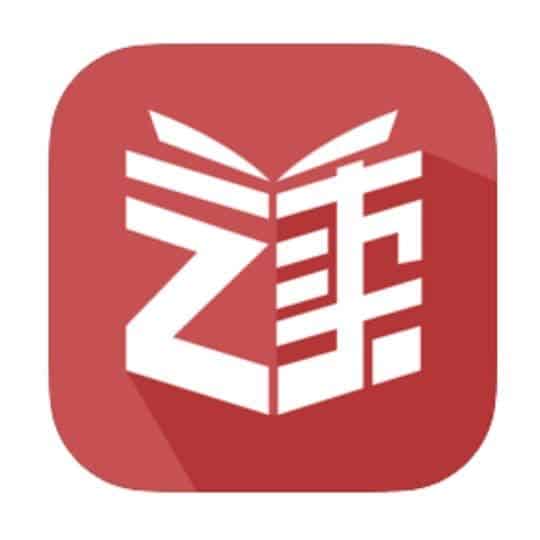
Du Chinese
One of two wonderful subscription reading apps that I wholeheartedly recommend. You can read news articles and short stories in Chinese based on your current HSK level, whilst saving difficult words to a flashcard function. There is also audio available for every text and a whole other handy bunch of bells and whistles.
PRICE:
– 1 Month: $11.99
– 6 Months: $54.99
– 1 Year: $89.99

The Chairman’s Bao
Very similar to Du Chinese with more content but one or two fewer features. You can purchase a collection of Chairman’s Bao articles through Pleco to read within the text reader function. Incredibly useful and totally worth the money.
PRICE:
– 1 Month: $10
– 3 Months: $25
– 6 Months: $45
– 1 Year: $80
– 2 Years: $140
For a more in-depth comparison of Du Chinese and The Chairman’s Bao, check this out.
Graded Readers
Graded readers are awesome, especially for intermediate learners trying to get themselves to the level of reading books for natives. Extensive reading is like steroids for your Mandarin learning (except you don’t deflate and get health problems afterwards).
Rainbow Bridge Reader – Loads of short stories from beginner learners right up to advanced. Loads of starter books for those at HSK 1, and then higher-level stories for above and beyond. These stories are very much centered around traditional Chinese culture and history.
Mandarin Companion – Buy them. Read them all. By far my favourite set of graded readers. The stories are interesting and the language is suited to high beginner/lower intermediate learners. They go from breakthrough level books(150-character vocabulary) to level 1 (300-character vocabulary) to level 2 (450-character vocabulary). Available in simplified and traditional characters.
Selected Abridged Chinese Contemporary Mini-Stories – Another solid collection of graded readers going from 500-word vocab level up to 3000-word vocab level. Loads of reading content but the repetitive theme of the stories can get a little samey and boring. However, I still recommend reading them to get a fuller understanding of the language and recent history of China through famous Chinese storytellers.
Pleco – Inside the Pleco add-ons section you’ll find a huge collection of graded readers (some of which are mentioned above) that you’ll be able to read inside the app. You can also get your hands on compilations of articles from The Chairman’s Bao suited to your level. I have the HSK 5 collection – 194 pages of very interesting news articles to read on my phone whenever I want!
For a more detailed guide on how to start reading in Mandarin Chinese, check out the post Learning to Read Mandarin Chinese | A Powerful Strategy for Newbies.
Listening
Listening and reading are the two most essential methods of acquiring a new language. Period. Don’t just take my word for it – this is backed up by numerous studies and every half-decent polyglot on YouTube.
Now, when it comes to listening in Mandarin, I’ve got bad news and good news.
The bad news? It’s objectively difficult.
The good news? The quantity and quality of listening material are better than ever and you can listen anywhere and you can do it cheaply.

Chinesepod
This is my main tool for studying Chinese through listening, and it has been for some time. ChinesePod provides thousands of podcasts covering a huge range of interesting and useful topics. In fact, I love it so much I’ve written a separate and more lengthy review for it here.
PRICE
– Basic: $14/Month, $39/Quarterly, $124/Annually
– Premium: $29/Month, $79 Quarterly, $249/Annually

Chinese Class 101
Like Chinesepod, ChineseClass101 is solely focussed on podcasts. I found the beginner lessons to be excellent. The advanced lessons weren’t up to much, but they offer loads of free stuff on YouTube and they have a range of subscription options.
PRICE
– 4 subscription options: free, basic, premium, and premium+
– There are loads of different options for longer-term subscriptions, so check prices on their website.
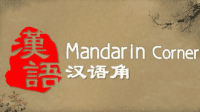
Mandarin Corner
The best YouTube channel for learning Mandarin. Hands down. SO much interesting content to suit all levels: vocab lists, grammar videos with examples, interviews, discussions on hot topics, etc. The premium version is only around $20 for lifetime access to everything on the site, including transcripts for videos and audio downloads. Seriously, I’m yet to find a resource that provides so much value for such a little price.
PRICE
– free on YouTube
– $15 for 3-month subscription
– $30 for lifetime subscription
Chinese Media
As you move to a higher level of Mandarin Chinese, you’ll want to begin consuming media in said language.
Now, the downside here is that a lot of music, TV shows, movies, and books from the Mainland are shockingly bad. Obviously, artistic taste is subjective, but Mainland China isn’t exactly known for its quality media exports. You’ll fair much better with stuff coming from Taiwan.
The good news is consuming Chinese media is incredibly cheap if you know where to look.
Fortunately for you, I have compiled a few whopping lists of the best books, podcasts, TV shows, movies, and YouTube channels for you to consume interesting content in Mandarin Chinese.
- 89 Awesome Chinese Books for Learners of Mandarin Chinese
- 100+ Podcasts for Learning Chinese | Beginner to Advanced Material
- 101 TV Shows for Chinese Learners | Drama, Action, Comedy, and More!
- Learn Mandarin with Film | 101 Awesome Chinese and Taiwanese Movies
- 57 of the Best YouTube Channels for Learning Mandarin Chinese
Chinese Music
I hope you enjoy soppy love songs or techno that’s so bad you want to pour cement in your ears, because that’s what China’s music industry is based on.
However, all hope is not lost, and if you look hard enough you’ll find something you like.
The only resource you really need for listening to Chinese music in China is QQ Music (QQ 音乐), but KuGou (酷狗) has a lot of Chinese users, too.
If you’re outside China, Spotify is still the number one go-to music store thingy.
QQ Music is very easy to navigate once you get used to it. It also has some benefits that Spotify doesn’t have:
- It’s free and you don’t have to listen to annoying ads.
- Once you’ve listened to a song once that song can be listened to again on airplane mode so it doesn’t eat your data.
- Almost every song is translated into Chinese so you can learn the lyrics. Even Bruce Springsteen classics!
Here are some musical Chinese terms to help you navigate QQ Music:
音乐 – music 语言 – language 首页 – homepage 华语 – Chinese language
国语 – Chinese (Mandarin) 乐库 – Music library 排行榜 – Top charts
歌手 – singer 专辑 – album 歌词 – lyrics
Finding the kind of Chinese music you like can be tough. To get you started, there are quite a few helpful Reddit threads mentioning Chinese music more palatable to foreign ears:
- Chinese Music
- Chinese Music
- Chinese Music Subreddit Collection
- Chinese Indie/Rock Music
- Classic Chinese Karaoke Songs
- Taiwanese Music (often where the good stuff comes from)
The News
If you enjoy the absolute mind-fuck of the current political order, then why not watch it through the lens of the Mandarin-speaking world!
Mandarin News – News channel based in Malaysia revolving around world economic updates and stuff going in Malaysia. Completely in Mandarin.
CCTV Video News Agency – Loads of different kinds of news clips in both English and Chinese, ranging from short updates to long sections taken from their lives streams, as well as the standard daily news bulletins. If you want a completely immersive Chinese news experience then check out CCTV 中文国际。
BBC News 中文 – The British Broadcasting Corporation has a channel featuring loads of short news clips in Mandarin Chinese, as well as a live broadcast completely in Mandarin.
Blogs
There is a range of blogs out there that do a wonderful job of covering the entire Chinese learning progress. I say this knowing full well that they are my competition in this space, but I have to do my best for my fellow Mandarin learning homies.
- Hacking Chinese
- FluentU Chinese Learner Blog
- LTL Mandarin School Blog
- TutorMing
- Sinosplice
- Dig Mandarin
- Mandarin HQ
- Tutor Mandarin
The HSK
The HSK test is the standardized test of Standard Chinese language proficiency test for non-native speakers.
HEADS UP: It was announced in 2020 that big changes are coming to the HSK and they’ll be rolled out over the coming years. These include changes to the learning content and structure for the existing 6 levels, as well as the addition of another 3 advanced levels (7, 8, and 9). For a more detailed guide on the changes to the HSK, check this out.
If you have no idea what I’m talking about, Everyday Easy Chinese has a solid guide to the HSK below.
There is also a spoken HSK exam, the HSKK, and this is divided into beginner, intermediate and advanced.
You can buy the official HSK textbooks online with Taobao and Amazon, and you can look at some past papers here.
For more information regarding the HSK, check out my whopping post The Ultimate Super-Mega-Whopping Guide to the HSK 3.0.
Learning Chinese in China
I have lived in China for a long time and I have a lot of experience in terms of studying within different institutions in the country.
I’ve studied with private tutors, at Sun Yat-Sen University in Guangzhou, and at Omeida Chinese Academy in Yangshuo.
If you want to reach the highest heights of Mandarin, you will probably need to spend at least some time in a Mandarin-speaking environment.
Check out the following articles where I go into much more depth on how to study Chinese in China.
- The Ultimate Guide to Learning Chinese in China
- Studying Mandarin at a University in China: What You Need To Know
Final Tips and Pointers
If you’re struggling to know where to start, I suggest the following:
- Step 1: Start with one of the three free apps mentioned at the beginning of the post, and follow a beginner’s textbook methodically. This will be a steady, structured introduction to Chinese which won’t overwhelm you, and it won’t be a huge investment at this stage.
- Step 2: Keep going. You will have days where you think, ‘Seriously, what the **** is the point?’ This is normal. You have undertaken one of the toughest challenges known to man and it will take a lot of time to get to a proficient level. Give yourself at least a thousand hours of study before you accept this isn’t for you.
- Step 3: Figure out which area of the language you find most difficult and which area needs more work. Tailor your learning progression accordingly. For example, I find listening very difficult and yet very rewarding, so much of my time is spent using ChinesePod and reading transcripts of the podcasts.
- Step 4: Reptition is key. Just listened to a podcast or read a chapter of your textbook? Cool story, bro. Do it another 10, 20 or 50 times to make it stick to your brain like glue.
Further Reading
- The 21 Best Apps For Learning Mandarin Chinese
- Learn Chinese for FREE | Free Apps, Sites, Courses, and Media
- Learning Chinese Grammar: The 7 Most Effective Tools and Techniques
- Where Can I Find Good Chinese Teachers Online?
- Learning Chinese Characters: 5 Effective Strategies
- Can I Live In China Without Speaking Chinese?
- 10 Reasons to Learn Mandarin Chinese
- Learning Chinese: 15+ Listening Tools Perfect for Beginners
- 7 Tips for Drastically Improving Your Pronunciation of Mandarin Chinese
- 7 Useful Tips for Improving your Chinese Handwriting
- Can you Learn Chinese by Studying Only 5 Minutes a Day?
